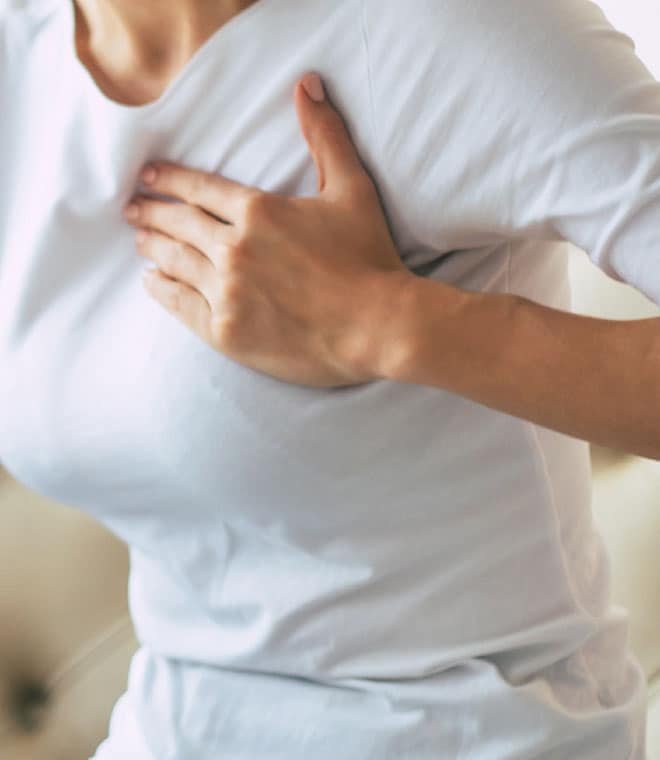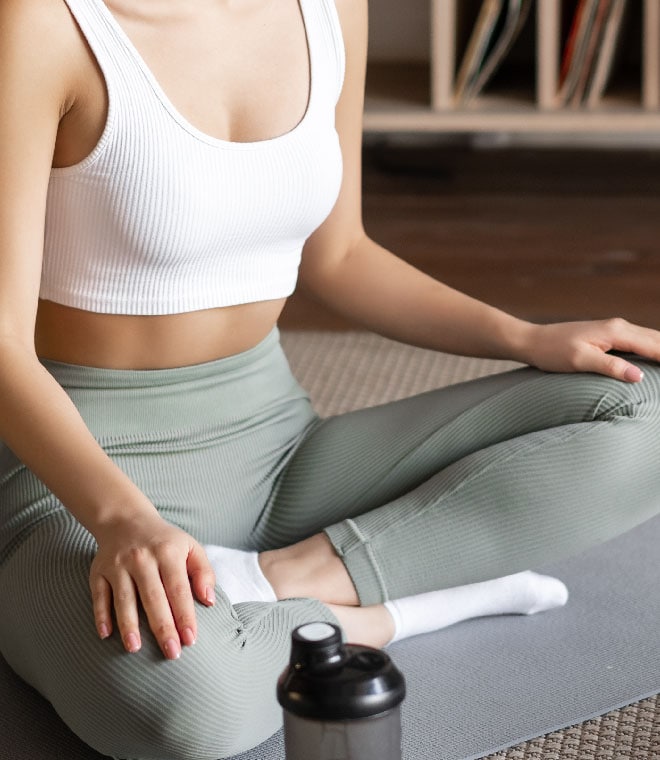
Buying Guides
Guide to menstrual care: Find the right supplies
By Patricia Ann Convery, MD, Fellow, American College of Obstetrics and Gynecology Jul 21, 2024 • 13 min
Most women will have about 450 periods over the course of their lives. Fortunately, there are many ways for you to manage menstrual flow and feel more confident while practicing good hygiene throughout each of your periods. Which feminine care option is right for you depends on your needs, lifestyle and personal preferences.
Period pads
Disposable menstrual pads feature absorbent material, like cotton or rayon, mounted on a backing outfitted with a self-adhesive strip that holds them in place in your underwear. They come in a variety of absorbency levels, sizes and shapes. Some feature wings that wrap around the sides of underwear to secure them in place and help prevent leaks.
In recent years, washable, reusable menstrual pads have become available. They usually have wings equipped with hook-and-loop fasteners for security.
Benefits and usage
Pads are simple to use, especially if you choose disposable options that don’t require laundering. You simply peel off the backing, position the pad and press it into place. Because they’re easy to use, they’re often the first menstrual products that girls and women use.
Some people prefer pads because they don’t require inserting anything into the vagina.
Potential downsides
In most cases, you’ll need to change menstrual pads every three to four hours, which can be inconvenient. Due to the need for frequent changes, disposable pads can become expensive over time, and they produce a large amount of waste. Reusable pads help reduce waste, but they do require laundering.
Pads typically can’t be used while swimming, and they may not work with certain types of underwear, such as thong styles. In addition, they may be visible under form-fitting, thin clothing. Scented menstrual pads can cause irritation for women with sensitive skin.
Panty liners
Like menstrual pads, panty liners go inside your underwear and feature a self-adhesive backing that holds them in place. The biggest difference between the two is size. Panty liners are generally shorter and much thinner than conventional period pads. Some are made to fit different styles of underwear, such as thongs.
Benefits and usage
Panty liners are typically used for protection between periods. Women may choose to wear them when they expect their periods to arrive or to capture vaginal discharge or menstrual spotting to keep their underwear clean. Due to their size, panty liners are generally comfortable, and they’re less likely to be visible under clothing.
Potential downsides
Since panty liners provide only light protection, leaks may occur if your flow becomes heavy while wearing them. Like pads, panty liners usually can’t be worn with bathing suits and may not work well with certain types of underwear. They also come with the same cost and waste considerations as menstrual pads.
Tampons
Shaped like small cylinders, tampons are absorbent products worn inside the vagina. Once in place, they draw in menstrual fluid to prevent leaks. Like pads, tampons come in an array of absorbency levels.
Benefits and usage
To use a tampon, you gently push the cylinder into your vagina. Some tampons come with plastic or cardboard applicators to make insertion easier. On the end of a tampon is a string for removal.
Compared to pads, tampons can generally be worn for longer periods of time — about four to eight hours, depending on the product. You can wear them while swimming and with any type of underwear, and they’re invisible under clothing.
Potential downsides
Tampons can be a little more difficult to use than pads, but most girls and women can learn how to insert and remove them more easily after a few uses. Some people do find tampons to be less comfortable than pads, and others may not like the idea of inserting something into their vagina.
Like other disposable period products, tampons do contribute to waste, especially types that come with applicators. They also tend to be the most expensive form of period protection when you consider ongoing costs.
There are some risks of using tampons that you should be aware of. Although it doesn’t happen often, the string of a tampon may detach, making removal more difficult. Tampons also generally can’t be used in the weeks following childbirth.
Tampons can also lead to toxic shock syndrome (TSS), a serious medical condition caused by bacteria. Rates of TSS have declined since tampons were first introduced due to changes in product design and consumer education, but cases do still occur. You can decrease your risk of developing TSS by using the lowest absorbency level possible to prevent leaks, changing your tampons regularly, washing your hands before inserting tampons and carefully following the usage instructions provided by the manufacturer.
Period cups and underwear
Period cups, period underwear and menstrual discs may be an option for women looking for alternatives to tampons and pads. These products have become more popular recently.
Period cups
Made of medical-grade silicone or latex, period (menstrual) cups are soft, pliable cups with pointed tips on their closed ends. They go inside the vagina, where the sides of the cup are held in place by the vaginal walls, capturing menstrual fluid.
Menstrual cups come in different sizes. Refer to the manufacturer’s sizing guidelines to choose the option that best fits your needs.
Benefits and usage
To use a menstrual cup, you first fold it into a C or S shape, insert it into the vagina and then rotate 360 degrees to create a seal. When it’s time to remove the cup, first pinch to loosen the seal and then pull the cup out by the tip at the bottom.
One of the biggest benefits of menstrual cups is convenience. They typically only need to be emptied every four to 12 hours. When maintained properly, a single menstrual cup can last for up to 10 years, greatly reducing waste and making period cups highly cost-effective.
Like tampons, menstrual cups are discreet and undetectable under clothing. You can wear them while swimming and with any kind of underwear.
Potential downsides
Some women find that it takes more practice to use menstrual cups correctly than it does to master the use of tampons, and leaks can happen if you don’t properly position them. Others decide against menstrual cups because they don’t want to empty and clean them or due to concerns about inserting something into their vagina.
There is a slight risk of TSS with menstrual cups. However, regularly emptying cups, washing your hands before inserting and removing cups, and following the recommended usage instructions can lower the likelihood of this complication.
Like tampons and other menstrual products that are inserted into the vagina, menstrual cups typically shouldn’t be used during the first few weeks after childbirth. Women should consult with their healthcare provider before using any internal products, due to risk of infection. Also, some women may not be able to use menstrual cups due to their vaginal shape or cervical position.
Menstrual discs
Available in both disposable and reusable forms, menstrual discs are period protection products that you insert through your vagina and position in the space behind your pubic bone and cervix. They resemble shallow discs and come in an assortment of sizes, as menstrual cups do.
Benefits and usage
To use a menstrual disc, you pinch it and insert it into the vagina, pushing it as far back as it will go comfortably. Once you have it in place, you tuck the front edge behind your pubic bone to keep the disc secure. To remove the disc, hook your thumb under the front edge and pull to loosen it.
Most menstrual discs can be worn for up to 12 hours, cutting down on the need for frequent changes or emptying. Reusable discs can last a long time, reducing waste.
Another key advantage of the menstrual disc is that it can be left in place during sexual activity. It can also be worn while swimming and with any type of underwear. In addition, the disc's design may help reduce the risk of spills during removal.
Potential downsides
The downsides of menstrual discs are similar to those associated with menstrual cups. It can take practice to use one properly, and when the disc isn’t properly positioned, leaks may occur.
Menstrual discs may pose a risk for TSS, though following product instructions carefully for cleaning and storage lowers the likelihood of developing this condition. As with other internal menstrual products, discs typically shouldn’t be used during the weeks after childbirth.
Cleaning is necessary after each use with reusable menstrual discs. Disposable discs eliminate the need for cleaning but create waste like other disposable menstrual products.
Period underwear
Menstrual underwear looks like a regular pair of panties, but it’s made out of absorbent material that draws in menstrual fluid. Some women choose to wear menstrual underwear on its own or combine it with other period protection products like tampons and pads.
Benefits and usage
Since menstrual underwear works like regular underwear, there’s no learning curve required to use it. Most period underwear can provide protection for up to 12 hours.
You can wash and reuse period underwear over and over, eliminating waste and reducing the ongoing cost of period products. No one will be able to tell that you’re wearing period underwear rather than regular undergarments.
Potential downsides
One of the biggest drawbacks of period underwear is the need for laundering. Women will need multiple pairs to wear per day if using period underwear as their sole period protection. As a result, the initial cost of menstrual underwear is generally greater than the initial investment for a period cup. Also, underwear may not last as long as cups do.
Sizing is important when purchasing menstrual underwear. To provide adequate protection, period underwear must fit close to the body, but if it’s too tight, it can cause discomfort. Women may struggle to choose the right size at first. However, manufacturers do offer sizing charts to make selection easier.
If you’re still unsure which type of menstrual products are right for you, talk to your healthcare provider. They can provide you with individualized advice and give you tips on how to feel your best during your period.
Published July 2024.
Sources:
- https://kidshealth.org/en/teens/menstruation.html
- https://www.health.harvard.edu/blog/how-to-choose-period-products-202210052828
- https://www.nj.gov/health/womenshealth/reproductive-health/periods-menstruation/period-products/menstrual-cups.shtml
- https://www.cdc.gov/hygiene/personal-hygiene/menstrual.html
- https://kidshealth.org/en/kids/pads-tampons.html
- https://www.nj.gov/health/womenshealth/reproductive-health/periods-menstruation/period-products/pads.shtml
- https://www.ippf.org/blogs/period-products-what-are-options
- https://uthealthaustin.org/blog/period-products
- https://www.nj.gov/health/womenshealth/reproductive-health/periods-menstruation/period-products/period-underwear.shtml
- https://www.nj.gov/health/womenshealth/reproductive-health/periods-menstruation/period-products/tampons.shtml
- https://www.fda.gov/consumers/consumer-updates/facts-tampons-and-how-use-them-safely
- https://my.clevelandclinic.org/health/articles/9682-pregnancy-physical-changes-after-delivery
- https://www.nj.gov/health/womenshealth/reproductive-health/periods-menstruation/period-products/menstrual-discs.shtml
- https://health.clevelandclinic.org/tired-of-tampons-here-are-pros-and-cons-of-menstrual-cups
- https://www.mayoclinic.org/diseases-conditions/toxic-shock-syndrome/symptoms-causes/syc-20355384



